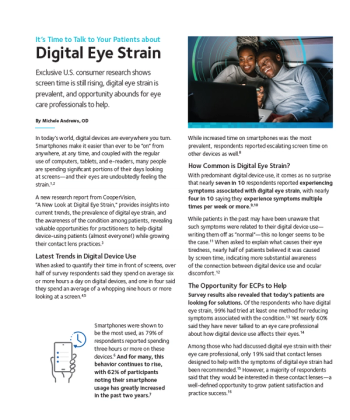
Innovating at the Crossroads: Eye Care for Different Stages of Life
This publication is sponsored by Bausch + Lomb.
Mitch Ibach, OD FAAO
Optometrist
Vance Thompson Vision
Sioux Falls, SD
Jessilin Quint, OD, MBA, FAAO
Co-owner and Optometrist
Smart Eye Care
Farmingdale, ME
Walter Whitley, OD, MBA, FAAO
Optometrist
Virginia Eye Consultants
Virginia Beach, VA
Monica Johnsonbaugh, OD
Owner and Optometrist
Focus 313 Eyecare
Grosse Pointe, MI
On November 6, 2024, Optometry Times® held a Grand Rounds panel discussion centered on new approaches to the management of patients with dry eye symptoms. The expert panel consisted of 4 optometrists, and the grand rounds participants included 24 optometrists from around the United States. Leading the discussion were Mitch Ibach, OD, FAAO, optometrist at Vance Thompson Vision, South Dakota; Jessilin Quint, OD, MBA, FAAO, co-owner and optometrist at Smart Eye Care, Maine; Walter Whitley, OD, MBA, FAAO, optometrist at Virginia Eye Consultants, Virginia; and Monica Johnsonbaugh, OD, owner and optometrist at Focus 313 Eyecare, Michigan. The discussion focused on making key decisions in the management of patients with dry eye, including when to recommend supplements and artificial tears, identifying inflammation as a treatment priority, targeting evaporative dry eye, and managing contact lens related dryness for successful contact lens wear. Following is a summary of key takeaways and advisor insights from the meeting.
Intermittent Symptoms vs Dry Eye Disease
According to the American Academy of Ophthalmology, dry eye disease is a multifactorial disease of the ocular surface characterized by a loss of homeostasis of the tear film and accompanied by ocular symptoms. Dry eye symptoms may include discomfort or visual disturbance and are a consequence of the dry eye disease cycle of tear film instability, hyperosmolarity, and ocular surface inflammation and damage. Differentiating dry eye disease from intermittent symptoms can be a challenge, as “often, patient signs and symptoms don’t add up,” shared Dr. Ibach. The prescribers generally agreed that dry eye disease is implicated by the presence of clinical signs such as corneal staining, abnormal osmolarity, dysfunction or truncation in the meibomian glands, abnormal tear breakup time, rosacea, and blepharitis. “I define ‘dry eye disease’ when I start to see a clinical sign and it has the potential to be progressive,” said Dr. Quint. Similarly, Dr. Johnsonbaugh distinguishes dry eye disease from intermittent symptoms “with clinical testing such as Schirmer’s, tear break up time, measuring tear film stability, and corneal staining,” she said. “I find that many of my patients who experience dry eye symptoms do, in fact, have dry eye disease.” Often, these patients do not realize that they have the disease, said Dr. Whitley.
Distinguishing individuals with dry eye disease from those who are experiencing only occasional mild symptoms is important, as each involves a different management approach. “I usually won’t start prescription treatment if I have a patient with mild dry eye symptoms but no signs,” said Dr. Ibach. However, these patients can still benefit from management, particularly those who wear contact lenses, according to Dr. Johnsonbaugh. For these patients, Dr. Quint typically starts with over-the-counter (OTC) products such as heat masks, eye drops, and nutritional supplements and recommendations for environmental and lifestyle changes. Dr. Whitley noted that artificial tear and nutritional supplements are appropriate for people who experience only occasional symptoms, perhaps once every few weeks or months. These approaches are confirmed in the TFOS DEWS II as a first-stage defense in management of dry eyes.
By contrast, people with dry eye disease who experience daily symptoms often need prescription treatments to address evaporation of tears and/or inflammation of the eye. Inna Lazar, OD, a grand rounds participant, explained that dry eye disease often involves underlying mechanisms like evaporative issues (commonly linked to meibomian gland dysfunction) or aqueous deficiency. She said, “For these patients, a comprehensive evaluation—including medical history, diagnostic tests, and tear film analysis—is essential. Treatment for dry eye disease often requires targeted interventions such as thermal therapies, prescription eye drops, or advanced technologies to address the specific root causes and provide long-term relief.” Dry eye interventional procedures such as intense pulse light, thermal pulsation, or microexfoliation may also be necessary. “I tend to be more aggressive with treatment depending on the level of dryness,” shared Dr. Johnsonbaugh. OTC products can help play a supportive role in providing symptom relief, shared Dr. Quint, but dry eye disease is managed primarily with in-office treatment or pharmacological agents. Dr. Ibach shared that, overall, patients with a dry eye disease diagnosis and active symptoms tend to be much more compliant with treatment recommendations. These patients “want their doctor to make a detailed plan and prescribe pharmaceuticals, nutraceuticals, and/or in-office [procedures],” he said. “By contrast, patients who have definite signs of dry eye disease but are asymptomatic are often tougher to prescribe treatments for because they don’t [believe there is a] concern.”
Nutritional Supplements and Artificial Tears
The prescribers shared that they use OTC products as part of their management approach for dry eye symptoms, as they can often provide relief and support overall eye health before moving to other options. Christina Streff, OD, another grand round participant, said, “I recommend high-quality supplements and artificial tears as a baseline option for patients with early symptoms of dry eye. When it comes to OTC products, quality matters. Artificial tears must have high-quality ingredients. I recommend preservative-free artificial tears that support all 3 layers of the tear film.” Some highlighted their use of Blink™ NutriTears® as an important supplement for their patients. Regarding the importance of supplements such as Blink NutriTears, Dr. Johnsonbaugh shared, “Dry eyes can be caused by many factors, and I believe it’s important to highlight how a patient’s diet can play a role in dryness. The studies [on Blink NutriTears]1 have been impressive, and I like the variety of ingredients that support eye health. For example, curcumin targets inflammation2; that is just one component of these supplements that plays a role in their efficacy.”
In practice, Dr. Whitley shared, “I often suggest OTC nutritional supplements, such as Blink NutriTears, as a complement to any prescription treatment. I educate patients on how these products can address dry eyes internally and provide some symptom relief.” He emphasized that when selecting artificial tears, he looks for products that are lipid-based and preservative-free. Similarly, Dr. Quint shared that “Now that we have Blink NutriTears, I recommend that to everyone. Other OTC products I discuss include heat mask, eyelid cleanser, preservative free artificial tears, makeup remover, eye cream, and cleanser.”
The prescribers discussed the need to consider the importance of the ocular surface in contact lens related dryness. The participants said that it was important to be proactive with treating the underlying ocular surface disease before moving into the secondary contact lens portion. They said, “We know that dry eye is like a multi-chapter [book]. You start chapter one with treatment, then you have to move on to chapter two: [contact lenses].” Dr. Johnsonbaugh shared that because her practice includes many patients with contact lenses, she is often discussing OTC products and supplements. “For the patients who have some symptoms of contact lens dryness but are lacking signs of dryness upon clinical testing, I typically discuss using an artificial tear such as Biotrue® Hydration Boost for Contacts drops,” she said. “The combination of glycerin, electrolytes, hyaluronic acid, and moisturizers helps with contact lens related dryness.” Overall, it was advised that if patients are relying heavily on artificial tears for symptom relief, dry eye treatment including prescription should be considered for longer-lasting relief.
Dr. Ibach does not often recommend the use of artificial tears. “I often think overusing artificial tears leads to dissatisfied patients who feel they’ve tried multiple different OTC products with minimal improvement,” he said. “These patients often have had multiple stops with dry eyes before getting started on a targeted therapeutic treatment plan focusing on inflammation and or evaporation.” He typically prefers to start with a prescription product rather than artificial tears; a survey showed that, on average, patients typically try 3.3 brands of artificial tears before seeing an ECP for their symptoms.3
Prescription Treatments
Patients who have not experienced sufficient relief with OTC options may benefit from prescription therapy. Dr. Whitley uses prescription therapies for patients who need artificial tears more than twice a day, and Dr. Johnsonbaugh moves to prescription therapies for patients with moderate dryness or those who have tried OTC products without experiencing improvement. Some health care practitioners order prescription treatments from the start. Grand round participant Ranjani Panda, OD, added, “From the beginning, I believe, patients need a prescription to treat the front surface.”
Prescription therapies are typically warranted when a patient presents with clinical signs of dry eye disease such corneal staining, meibomian gland dysfunction, or decreased tear break up time.4 The presence of certain symptoms also guides Dr. Ibach’s decision to initiate prescription therapy. “Burning, stinging, pain, and photophobia will lead me down the inflammatory Rx medication pathway,” he said. Other symptoms that may indicate a need for prescription therapy include fluctuations in vision, watering, and changes in blink.5 Some of the participants agreed that a patient with dry eye disease requires prescription treatment when they present with significant clinical signs or underlying conditions that suggest moderate to severe disease with key indicators including a history of systemic autoimmune diseases, eyelid telangiectasia, meibomian gland capping or truncation, or gland loss along with diagnostic findings like reduced tear breakup time, low tear meniscus levels, and corneal or conjunctival staining. These findings often point to more chronic or inflammatory forms of dry eye that exceed the benefits of OCT options and require targeted therapies to address the root cause.6 Grand rounds participant Treacy Adamo, OD, FAAO, said that she can determine that a patient requires prescription treatment “often once they are presenting to me [and when] they have already exhausted OTC options.” Along the same lines, Chris Smiley, OD, another participant, said that he moves on to prescription options when patients have no improvements with OTC products and the patient’s condition begins worsening, and Henry Bausback, OD, said, “I feel if they are using a drop more than 4 times per day, they need an Rx drop or other therapy. Also, the severity of corneal staining helps my decision-making.”
Anti-inflammatory agents
Inflammation is a part of the TFOS DEWS II definition of dry eye disease.7 Dr. Whitley described the way by which inflammation is assessed as part of the initial workup in his practice. “In our dry eye work up protocol, we include the SPEED questionnaire to identify symptoms, meibography to look at the structure of the meibomian glands, tear osmolarity, and MMP-9 to look at inflammation, staining, corneal sensitivity, incomplete lid seal, and MG expression to identify function of the glands,” he said. Signs of ocular inflammation include injection, corneal staining, low tear production, and the presence of autoimmune disease, according to the prescribers.
Prescribers noted that use of anti-inflammatory agents such as short-term topical steroids when patients are in the flare-up stage of their dry eye disease is critical to stabilize their condition. The participants discussed that clinical triggers include significant corneal or conjunctival staining, redness, and patient-reported symptoms of severe discomfort or photophobia. Grand rounds participant Katherine Rachon, OD, said, “I use anti-inflammatory [agents] very frequently to quickly help improve patient symptoms. The quicker you make [the patient] feel better, the more the patient will trust your ability as a doctor, and the more likely they will adhere to the treatment.” Participant Kylene Polhamus, OD, added that she prescribes an anti-inflammatory agent when the signs and symptoms signal it is important to manage and especially when she sees inflammation, which is “a majority of the dry eye that I see. I like a fast-acting* anti-inflammatory agents like Xiidra® ([lifitegrast ophthalmic solution] 5%, a prescription eye drop indicated for the signs and symptoms of dry eye disease).” Dr. Whitley said, his threshold for prescribing anti-inflammatories “is low.”
When inflammation is present, Dr. Whitley said he selects an anti-inflammatory on the basis of signs and symptoms. “If there are mild to moderate signs and symptoms, I go [straight] to an immunomodulator. If there are moderate to severe symptoms and signs, I will go to a short-term steroid (and will always check intraocular pressure and nerve prior to prescribing) as well as prescribing an immunomodulator.” Chrisitina Streff, OD, added that tear osmolarity is a great tool to evaluate a patient’s tear quality. “If tear osmolarity is elevated, then I prescribe an anti-inflammatory agent. It is important for anti-inflammatory agents to be effective, relatively fast acting, and to have tolerable side effects.”
For signs of inflammation on the ocular surface, Dr. Johnsonbaugh emphasized, “It is important to implement an anti-inflammatory agent that will act quickly to help minimize patient symptoms as well as an agent that will disrupt the cycle of inflammation such as Xiidra®.” Xiidra® is the only nonsteroidal immunomodulator that has shown statistically significant symptomatic improvement as soon as 2 weeks (in 2 of 4 pivotal studies).* Compared to other modulators that are on the market, Xiidra® has been specifically designed for the ocular surface, and it has a unique mechanism of action for decreasing inflammation, according to the prescribers. It blocks ICAM-1 from binding with the LFA-1 receptor of T cells, thereby inhibiting both active T cells and inactive T cells.8,† A therapy that hits both active and inactive T cells is a win for patients, they said. Xiidra® is not new, so patients typically have great access to it. Patients should be educated that they may experience mild burning, stinging, or a weird taste in the mouth upon application so that they are not surprised.‡
Dr. Ibach echoed the desire to use anti-inflammatories with “quick action or onset.” Patients in his practice are often going into refractive surgery or refractive cataract surgery, and delaying surgery can be a hurdle. For his patients with inflammatory markers such as MMP-9 or corneal staining, he “almost always starts with a [long-term] immunomodulator medication with a short-term corticosteroid boost,” he said. “Corticosteroid drops can be a nice rescue or accelerant prescription.”
When selecting an anti-inflammatory, prescribers prioritize tolerability for patients in addition to efficacy. Dr. Ibach noted, “[Patients] have to be willing to continue the regimen.” Dr. Quint also aims to use anti-inflammatory therapies that are accessible to her patients both through availability at the pharmacy and affordability.
Anti-evaporative agents
There is an evaporative component to 86% of all cases of dry eye,9 according to Dr. Whitley. “That cannot be overlooked,” he said. “Tear film instability leads to hyperosmolarity, which is one of the first early signs of dry eye disease.” Symptoms that indicate the presence of excessive evaporation can include watery or weepy eyes and fluctuations in vision, according to Dr. Ibach. Diagnostic tests can include noninvasive tear breakup time or fluorescein tear break up time. Grand rounds participant Erick Henderson, OD, added, “I always stain the cornea and evaluate [tear break up time] to assess tear evaporation, [especially] if a patient has already failed on an immunomodulator or if the patient is younger and the excessive screen time is contributing to poor functioning meibomian glands.” Prescribers noted that use of an anti-evaporative agent can be necessary when patients report symptoms like unstable vision or the need to blink frequently to maintain clarity, which are hallmark signs of tear film instability.10
When a patient’s dry eye is associated with an evaporative issue, Dr. Johnsonbaugh shared that it is essential to look at the lids and express the meibomian glands. “Patients with meibomian gland dysfunction typically need an anti-evaporative agent such as MIEBO® [perfluorohexyloctane ophthalmic solution],” she said. “Having a prescription drop in our tool belt that is indicated for the signs and symptoms of dry eye disease and targets evaporative dry eye has been incredibly beneficial in practice.” In addition to meibomian gland abnormality, Dr. Quint uses anti-evaporative agents when a patient has decreased tear breakup time, incomplete eyelid closure, more than 4 hours of screen time, considerable symptoms in certain environments (eg, after working on computer, flying in airplane, or golfing/skiing outside). “If there is obvious moderate to severe inflammation, I put out that fire first,” she said. “Then I move on to address the evaporative component. If their inflammation is more mild, then I will usually address the evaporative component first.” Perfluorohexyloctane helps reduce the evaporation rate of the tears,” he said, and added: “It’s a great option for any patient who is having meibomian gland dysfunction procedures performed [because it] provides targeted relief and treatment for evaporation.” Across two pivotal studies, MIEBO showed significant improvement in the signs and symptoms of DED.11-13 It’s important to note that the most common eye side effect seen in studies was blurred vision (1% to 3% of patients reported blurred vision and eye redness).11
Addressing Dryness Associated With Contact Lens Wear
Contact lens related dryness is one of the biggest issues contact lens wearers face. When patients present with complaints related to comfort while wearing contact lenses, clinicians may react by changing modality or switching to a different lens material.14 However, the prescribers noted
the importance of proactively assessing for and treating any underlying ocular surface disease before addressing concerns with the contact lens. Grand rounds participant Jennifer Bailey, OD, said that she addresses contact related dryness as needed following a prescription of the INFUSE® daily contacts, and Terry Null, OD, echoed that sentiment. Dr. Johnsonbaugh shared that when one of her patients has a concern with dryness associated with use of contact lenses, the first step is to determine if their dryness is something they consistently face or only present when they wear contact lenses. She emphasized the importance of evaluating tear film stability and treating any underlying dry eye to set patients up for success with contact lens wear in addition to selecting the right contact lens for the right patient. “I find that many of my patients who have previously dropped out of contact lenses are often able to return to contact lens wear once their dryness has been effectively treated,” she said.
For patients who experience dryness with contact lenses, lens material selection is a significant consideration.15 The prescribers agreed that it’s important to choose a lens material that’s designed to minimize the impact on the ocular surface. A participant shared the following pearl: “When you’re reaching for a contact lens, you want to grab one that is going to maintain the moisture, so you get the advantages of the amazing optics. It’s so important for all of these patients, even those that don’t have dryness, to be choiceful, considering which lens I’m grabbing for this patient in order to give them the best vision and best comfort, breathability, and health all throughout the day.” Dr. Quint evaluates how patients are using their lenses (eg, whether they use cleaning solution, how many hours of wear time, how often they dispose of the lenses, whether they sleep with the lenses) and educates them on changing their habits as needed. Other approaches include using prescription therapy in the morning or at night when contact lenses are out. Mark Coan, OD, a grand rounds participant, said that he looks for daily disposable lenses, availability of power, and water content of the lens.
Of course, there are lenses designed to address dryness associated with contact lens wear.16 Inna Lazar, OD, discussed her approach for managing patients who experience contact lens dryness. “For patients experiencing contact lens dryness, I typically switch them to daily disposable contact lenses specifically designed to minimize dryness.” She went on to explain that in her clinical experience when selecting contact lenses for patients with contact lens dryness, she prioritizes daily disposable lenses with high breathability, high moisture content, and a low modulus, as these features provide comfort, hydration, and reduced symptoms of contact related dryness throughout the day. Roy Kline, OD, another grand rounds participant, agreed that after evaluating the underlying conditions first, moving to a daily wear contact lens designed to address contact lens related dryness is recommended. He said, “Particularly [the] INFUSE® family of lenses…, with ProBalance Technology® that is inspired by [the] TFOS DEWS II report and includes ingredients such as moisturizers to keep the lens surface smooth and wettable and osmoprotectants to maintain ocular surface homeostasis under hyperosmotic stress. Additionally, the lenses have low modulus to help reduce the impact on the ocular surface.”4,17
When selecting the appropriate contact lens, “the goal is to help patients find a contact lens that gives them all-day moisture, breathability, comfort, and excellent optics,” said Dr. Johnsonbaugh. “I’ve found the INFUSE® family of lenses to deliver on each of these.” The optics of a lens is only as good as its moisture retention properties, which are quite high in the INFUSE® lenses, said the prescribers. INFUSE® contains 55% moisture content, and 96% of that moisture is maintained for a full 16-hour wearing experience.4,* The INFUSE® lenses are composed of next-generation silicone hydrogel material, which supports moisture retention and breathability and provides ProBalance Technology™. Proprietary ingredients are infused into the lens and are released throughout the full wearing experience to help maintain ocular surface homeostasis.4
Dr. Johnsonbaugh noted the importance of a contact lens that helps to minimize the impact on the ocular surface. “Utilizing daily disposable contact lenses that maintain ocular surface homeostasis, such as the INFUSE® family of lenses, has been incredibly effective. The ingredients in ProBalance Technology™, such as potassium, the osmoprotectants, and moisturizers, target contact lens related dryness.”4 Patients wear contact lenses more if they have contact lenses that are successful.
Patient Education and Shared Decision-Making
Several of the grand rounds participants shared that many of their patients think that their dry eye is associated with allergies and/or may not be serious enough to bring up to their provider. These patients sometimes may be less likely to be receptive to receiving a prescription for their symptoms. Patients should be educated on the importance of addressing dry eye symptoms before they progress. Ensuring that patients understand dry eye can become a “disease” may help get them on board with a treatment.
When determining a treatment strategy, clinicians should have a structured/individualized plan for each patient based on each individual’s needs, goals, and lifestyle.17 Kevin Chan, OD, another grand rounds participant, mentioned the use of questionnaires and additional testing when patients’ dry eye symptoms are not managed by artificial tears or for those who do not respond well to OTC products. “Having MMP-9 [test and results] would help validate patients’ signs and symptoms, which can guide [the] treatment approach more strategically.” Although patients have the option to use artificial tears and supplements on their own or part of a management strategy, the first step should be proactive. Christina Streff, OD, said, “My goal is to be proactive when it comes to treating dry eye. As a primary eye care doctor, I evaluate every single one of my patients for dry eye disease by looking for signs.” She went on to explain that these signs indicate that a patient needs prescription medication and not just OTC treatment and include elevated tear osmolarity, corneal or conjunctival staining, low tear lake, and abnormal meibum/gland expression.
Proactive Care
Dry eye is here to stay, said the prescribers, and it’s on the rise. Dry eyes can affect anybody. It is not limited to age or nationality. Eye care providers need to get comfortable with early treatment initiation and being very proactive with patients to help them feel their best and see their best for years to come. If patients show early signs, implementing data-driven strategies right away may support better outcomes down the road.
Overall, the prescribers agreed that the biggest takeaway from their discussion was to approach management of dry eye very proactively. “We’re all on the trajectory to being a dry eye disease patient,” emphasized Dr. Ibach. “And so even in a non–dry eye disease contact lens wearer, why wouldn’t I prescribe an INFUSE® lens, which is putting more water on the eye? It’s being proactive.” Prescribers recommended that clinicians be open-minded to all the options available for dry eyes. Clinicians should not be afraid to try something that they haven’t before.
The insights from the expert panel and roundtable discussions provided excellent therapeutic and supportive options for patients, addressing signs and symptoms of dry eye disease and contact lens related dryness. In summary, the prescribers acknowledged that there are a lot of options out there for doctors and patients, and understanding what is available will allow providers to create individual plans based on addressing their patients’ needs.
*Xiidra may provide lasting symptom relief for some patients with continued twice-daily use. In clinical studies, Xiidra reduced symptoms of eye dryness at 2 weeks in 2 out of 4 studies, with improvements observed at 6 and 12 weeks in all 4 studies.
†In 5 clinical studies of dry eye disease with lifitegrast ophthalmic solution, 1401 patients received at least 1 dose of lifitegrast (1287 of whom received Xiidra). The majority of patients (84%) had up to 3 months of treatment exposure; 170 patients were exposed to Xiidra for approximately 12 months. The most common AEs reported in 5-25% of patients were instillation site irritation, dysgeusia and reduced visual acuity.
‡In 5 clinical studies of dry eye disease with lifitegrast ophthalmic solution, 1401 patients received at least 1 dose of lifitegrast (1287 of whom received Xiidra). The majority of patients (84%) had up to 3 months of treatment exposure; 170 patients were exposed to Xiidra for approximately 12 months. The most common AEs reported in 5-25% of patients were instillation site irritation, dysgeusia and reduced visual acuity.
XIIDRA: Indication and Important Safety Information
Indication
XIIDRA® (lifitegrast ophthalmic solution) 5% is indicated for the treatment of the signs and symptoms of dry eye disease (DED).
Important Safety Information
- XIIDRA is contraindicated in patients with known hypersensitivity to lifitegrast or to any of the other ingredients.
- In clinical trials, the most common adverse reactions reported in 5-25% of patients were instillation site irritation, dysgeusia and reduced visual acuity. Other adverse reactions reported in 1% to 5% of the patients were blurred vision, conjunctival hyperemia, eye irritation, headache, increased lacrimation, eye discharge, eye discomfort, eye pruritus and sinusitis.
- To avoid the potential for eye injury or contamination of the solution, patients should not touch the tip of the single-use container to their eye or to any surface.
- Contact lenses should be removed prior to the administration of Xiidra and may be reinserted 15 minutes following administration.
- Safety and efficacy in pediatric patients below the age of 17 years have not been established.
You are encouraged to report negative side effects of prescription drugs to the FDA.
Visit www.fda.gov/medwatch or call 1-800-FDA-1088.
For additional safety information, please see the
MIEBO: Indication and Important Safety Information
Indication
MIEBO® (perfluorohexyloctane ophthalmic solution) is used to treat the signs and symptoms of dry eye disease.
Important Safety Information
- Remove contact lenses before using MIEBO and wait for at least 30 minutes before reinserting
- It is important to use MIEBO exactly as prescribed
- It is not known if MIEBO is safe and effective in children under the age of 18
- The most common eye side effect seen in studies was blurred vision (1% to 3% of patients reported blurred vision and eye redness)
You are encouraged to report negative side effects of prescription drugs to the FDA.
Visit www.fda.gov/medwatch or call 1-800-FDA-1088.
For additional safety information, please see the
References
- Gioia N, Gerson J, Ryan R, et al. A novel multi-ingredient supplement
significantly improves ocular symptom severity and tear production
in patients with dry eye disease: results from a randomized, placebo controlled clinical trial. Front Ophthalmol (Lausanne). 2024;4:1362113. doi: 10.3389/fopht.2024.1362113 - Qatarneh D, Mathew RG, Palmer S, Bunce C, Tuft S. The economic cost of posterior capsule tear at cataract surgery. Br J Ophthalmol. 2012;96(1):114-117. doi: 10.1136/bjo.2010.200832
- Data on file. Multi-Sponsor Surveys, Inc. 2022.
- Sheppard JD, Nichols KK. Dry eye disease associated with meibomian gland dysfunction: focus on tear film characteristics and the therapeutic landscape. Ophthalmol Ther. 2023;12(3):1397-1418. doi: 10.1007/s40123-023-00669-1
- Golden MI, Meyer JJ, Zeppieri M, et al. Dry eye syndrome. StatPearls. National Center for Biotechnology Information. Updated February 29, 2024. Accessed March 24, 2025. https://www.ncbi.nlm.nih.gov/books/ NBK470411/
- Thulasi P, Djalilian AR. Update in current diagnostics and therapeutics of dry eye disease. Ophthalmology. 2017;124(11S):S27-S33. doi: 10.1016/j.ophtha.2017.07.022
- Bron AJ, de Paiva CS, Chauhan SK, et al. TFOS DEWS II pathophysiology report. Ocul Surf. 2017;15(3):438-510. doi: 10.1016/j.jtos.2017.05.011
- XIIDRA. Prescribing Information. Bausch & Lomb, Inc.
- Lemp MA, Bron AJ, Baudouin C, et al. Tear osmolarity in the diagnosis and management of dry eye disease. Am J Ophthalmol. 2011;151(5):792-798.e1.
- Sheppard JD, Evans DG, Protzko EE. A review of the first anti-evaporative prescription treatment for dry eye disease: perfluorohexyloctane ophthalmic solution. Am J Manag Care. 2023;29(14; suppl):S251-S259. doi: 10.37765/ajmc.2023.89464
- MIEBO. Prescribing Information. Bausch & Lomb, Inc.
- Tauber J, Berdy GJ, Wirta DL, Krösser S, Vittitow JL; GOBI Study Group. NOV03 for dry eye disease associated with meibomian gland dysfunction: results of the randomized phase 3 GOBI study. Ophthalmology. 2023;130(5):516-524. doi:10.1016/j.ophtha.2022.12.021
- Sheppard JD, Kurata F, Epitropoulos AT, Krösser S, Vittitow JL; MOJAVE Study Group. NOV03 for signs and symptoms of dry eye disease associated with meibomian gland dysfunction: the randomized phase 3 MOJAVE study. Am J Ophthalmol. 2023;252:265-274. doi:10.1016/j.ajo.2023.03.008
- Koh S. Contact lens wear and dry eye: beyond the known. Asia Pac J Ophthalmol (Phila). 2020;9(6):498-504.
doi: 10.1097/APO.0000000000000329 - Ramamoorthy P, Sinnott LT, Nichols JJ. Treatment, material, care, and patient-related factors in contact lens-related dry eye. Optom Vis Sci. 2008;85(8):764-72. doi: 10.1097/OPX.0b013e318181a91f
- Chaudhary S, Ghimire D, Basu S, Agrawal V, Jacobs DS, Shanbhag SS. Contact lenses in dry eye disease and associated ocular surface disorders. Indian J Ophthalmol. 2023;71(4):1142-1153. doi: 10.4103/IJO.IJO_2778_22
- Jones L, Downie LE, Korb D, et al. TFOS DEWS II management and therapy report. Ocul Surf. 2017;15(3):575-628. doi: 10.1016/j.jtos.2017.05.006
Newsletter
Want more insights like this? Subscribe to Optometry Times and get clinical pearls and practice tips delivered straight to your inbox.


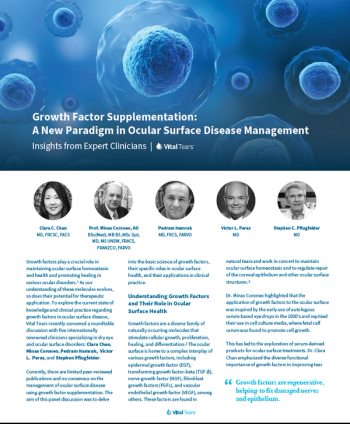
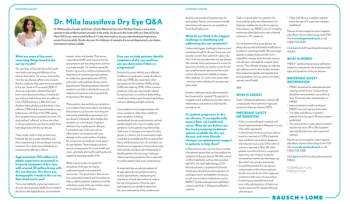




























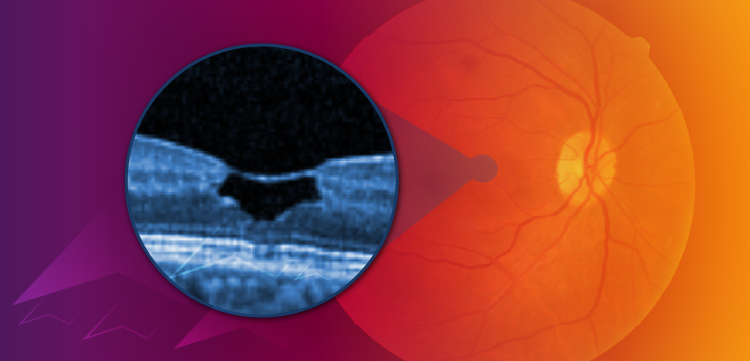


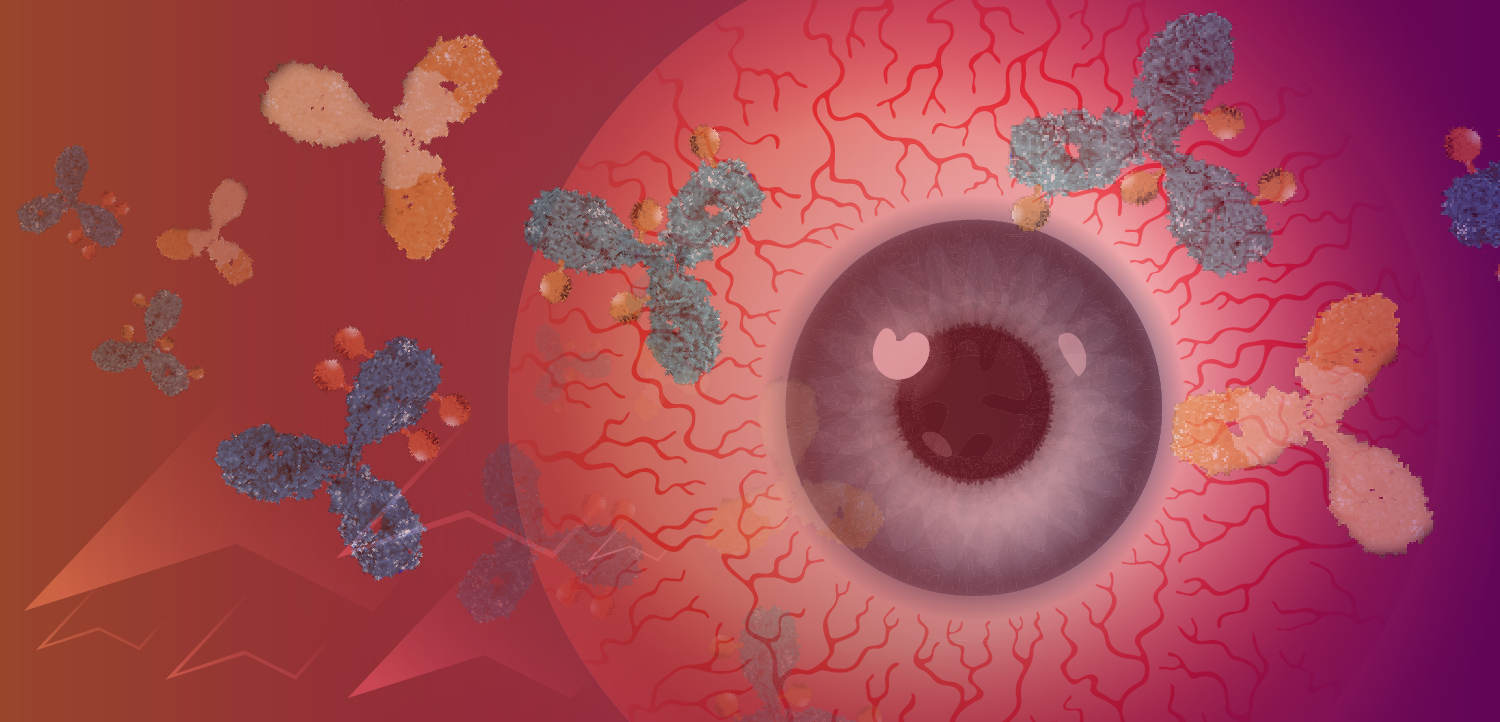

















.png)


